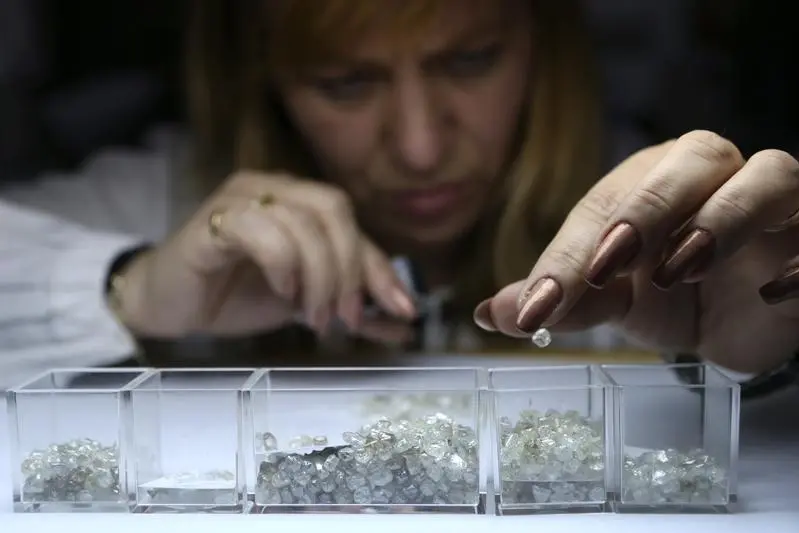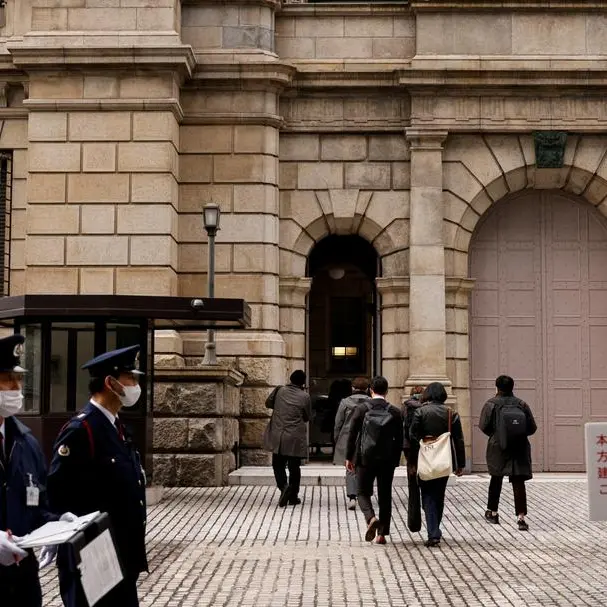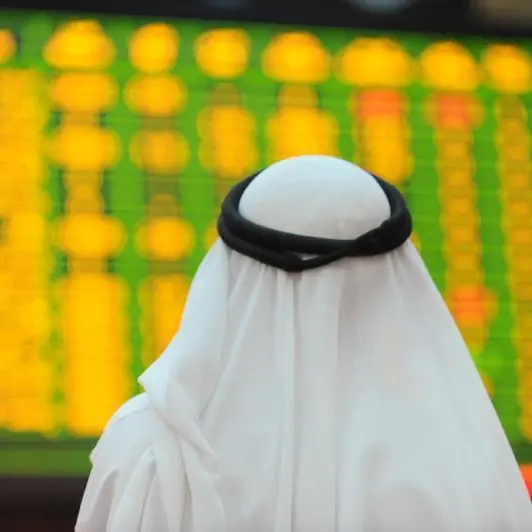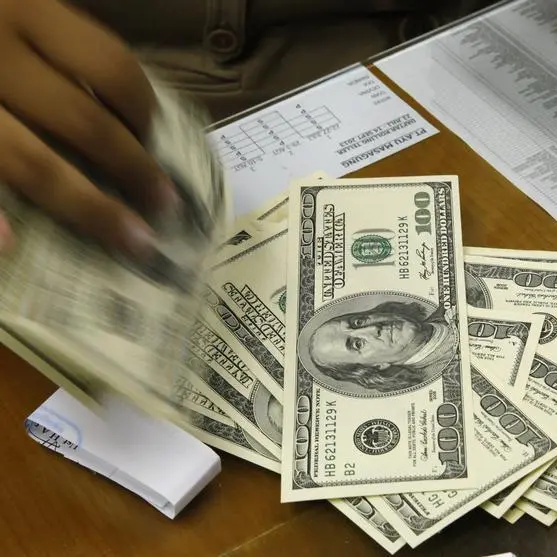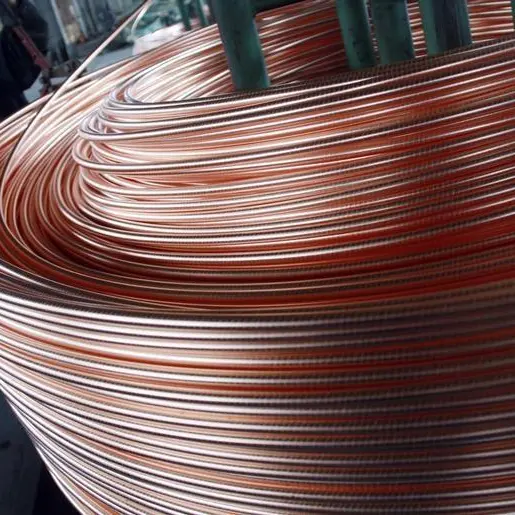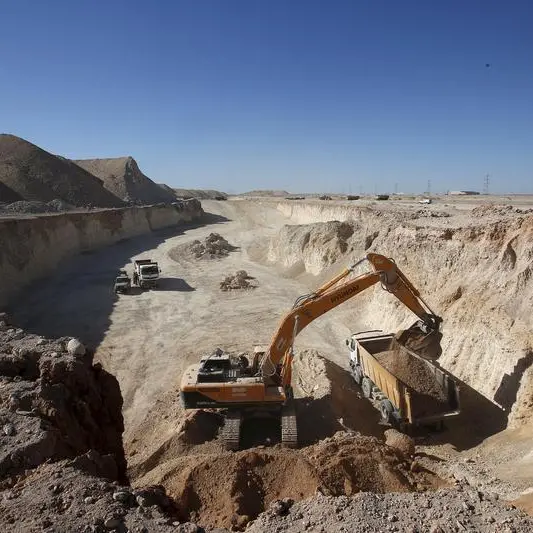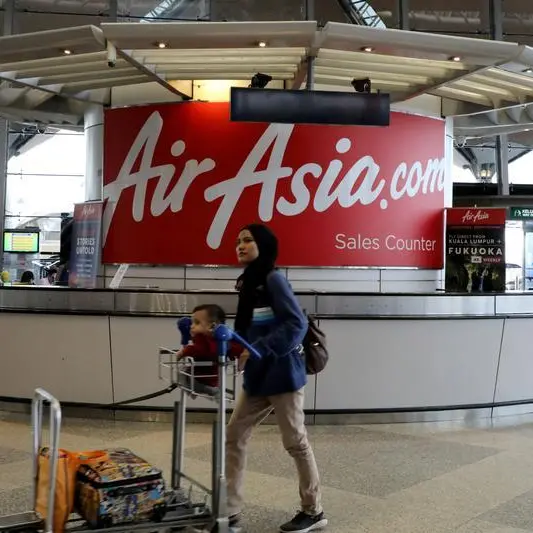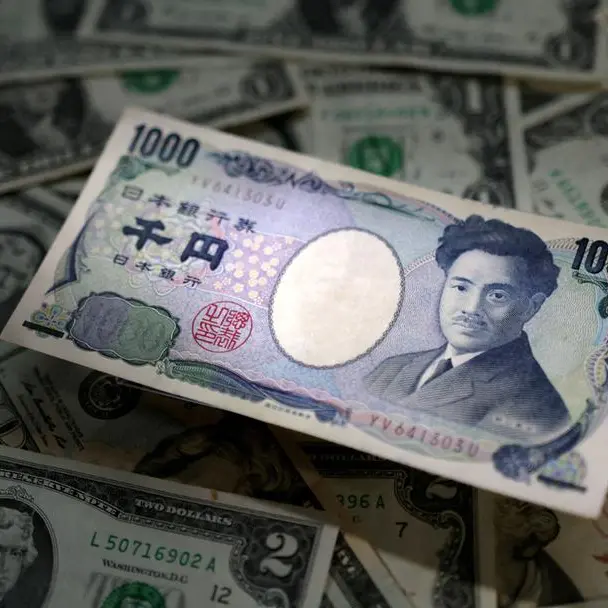PHOTO
At a tender sale on the trading floor of the Dubai Diamond Exchange (DDE), potential buyers examine a range of uncut stones that will sell for tens of millions of dollars over a two-day period.
Security is tight, with sales staff monitoring each desk where buyers examine uncut diamonds one by one. Video cameras are overhead. The weight of each package of diamonds is printed on the side of the plastic pots, and re-weighed each time they are returned from viewing rooms.
If the vision of the DDE to become the largest hub for trading diamonds in the world is realised, tender sales like this could become much more common.
Antwerp is currently the diamond world’s preeminent diamond centre, with the Belgian city trading these precious stones since the 16th Century. Yet Dubai has undergone a meteoric rise.
In 1997, diamond trading in Dubai was virtually non-existent, but by 2003 trade in rough and polished stones had increased to $3.6 billion and by 2017 it had risen to $28 billion, according to Martin Leake, special advisor - precious stones at Dubai Multi Commodities Centre (DMCC).
This figure took a hit last year following the introduction of VAT, but after trade in diamonds and precious metals was eventually exempted in May 2018, volumes picked up in the second half, Leake said.
The exchange is planning to renovate its trading floor. Once complete, it will be the biggest tender floor in the world, Leake told Zawya in an interview at the DDE last month. It will have up to 40 tables, fully secured with cameras and specialist lighting that buyers need to appraise diamonds.
Once the remodelling is complete, Leake said the DDE will encourage mining companies to bring their diamonds to Dubai to sell directly to buyers, as the industry reduces its reliance on brokers in favour of open, competitive sales processes.
Geography is on Dubai’s side. The majority of the world’s diamonds are mined in Africa or Russia, while around 11 of every 12 rough diamonds is cut and polished in India, mainly in Surat. That makes Dubai a convenient middle ground, especially as direct flights began to the city earlier this year.
Leake said Dubai diamond sales have witnessed an increase in buyers. “The more people you have in a tender the more competitive it is, therefore the better price for the producer.”
Funding linked to growth
One facet of Dubai’s growth as a trading hub has been the availability of financing. “Dubai is now becoming quite a significant hub for diamond financing,” Leake said. “Financing is absolutely critical for the continued growth of Dubai and that’s what we’re focused on.”
Yet overall lending to the diamond manufacturing sector, estimated to be around $14bn globally, is in decline. A number of bankruptcies and fraud cases have lessened the attractiveness of the sector, and a number of international banks have exited the space or retrenched, including KBC’s Antwerp Diamond Bank (ADB) and Standard Chartered, which lost $400m on diamond financing in a four-year period, according to Bloomberg.
More recently a number of Indian banks announced that they were pulling back, closing offices in Antwerp.
Financing is crucial to keeping the industry’s wheels turning, as manufacturers pay cash for uncut stones and then perform the time-consuming processes of cutting and polishing, often then selling polished stones on credit.
Leake said diamond trade financing is a relationship business, where banks are financing an inventory which is very mobile and difficult to value.
“It’s a complicated and specialist financing issue, but there are some excellent opportunities to be had,” he says.
Some UAE banks are helping to plug the gap: The National Bank of Fujairah began lending to the diamond trade in 2015.
By 2017, the bank’s combined precious metals, jewelry and diamond business had loans worth 3 billion dirhams ($816.8 million) to the sector and taken in 1.6bn dirhams in deposits, which contributed 129.7 million in operating income, according to its 2017 annual report. The bank declined to disclose figures for 2018.
Overall diamond lending makes up around 3 percent of its loan book, said one person familiar with the bank’s business. NBF declined to comment on these figures.
Emirates NBD is also active in the diamond financing space, according to two individuals familiar with the industry. An Emirates NBD representative declined to comment. Some Indian banks also have representative offices in Dubai, said Leake.
Affinity for the sector
For NBF, the move into diamond financing made sense given the bank’s history in lending to the precious metals industry, including gold bullion traders, Vince Cook, the bank’s CEO said in emailed comments last month.
Lending to both segments is trade finance-based and relationship driven, he said. However,
whereas precious metals companies are mainly active in the local market, “our diamond clientele are mainly international companies, whose businesses are more linked to global luxury spending,” said Cook.
NBF’s customers are major rough diamond traders and manufacturers: the bank is targeting bigger, well-known companies and currently has a book of roughly 50 borrowing clients, many with a presence in all the global diamond centres–Dubai, Antwerp, India, Hong Kong and New York, said Cook.
That makes sourcing accurate information essential. In 2015, one senior diamond banker warned that UAE banks entering the sector could face difficulties sourcing information about market events in the secretive trade without a presence in the major hubs.
Cook said that NBF began by hiring industry experts from Antwerp Diamond Bank’s operations in Dubai, but a big step for the bank came last month when NBF opened an office in Antwerp’s Diamond District, its first international representative office.
Cook said the move would help it “to increase our market knowledge and to gain new insights”.
The office will also help the bank monitor regulatory developments in Europe, ”which tends to be a frontrunner in terms of anti-money laundering and counter terrorism financing (AML/CTF) regulation, driving best practices,” said Cook.
On the information front, the DDE also has a role to play, with the exchange’s 1,100 members required to sign compliance declarations. On a notice board near the tender floor are pinned sheets of coloured paper bearing the names and photos of traders banned either locally or on global exchanges, with Leake stating that the DDE is a member of the World Federation of Diamond Bourses.
“The worst thing would be if a person got banned from Israel and relocated to Antwerp, or got banned from Antwerp and relocated to Dubai,” he explains.
Difficult days
But while NBF is hitting its stride, internationally difficulties are mounting for the industry.
Notable is a major bank fraud that came to light last year in India, allegedly perpetrated by Nirav Modi, a jeweller to the stars, and other diamantaires including Mehul Choksi, which saw Indian state-owned Punjab National Bank (PNB) defrauded out of nearly $2bn.
One central element of the fraud was round-tripping - the practice of shipping a single stone multiple times between various companies, and borrowing against the multiple fake invoices generated.
According to investigators in the U.S., Modi transferred stones between companies that he indirectly owned in Hong Kong, New York and Dubai, alternating between inflating and deflating their value. The fake invoices were then used to obtain short term loans from PNB.
In India this scandal, and others, as well as multiple bankruptcies among smaller manufacturers, has caused talk of forced corporatisation and increased transparency in the sector, something that bankers have been seeking for years.
At NBF, Cook brushes aside a question about the Modi scandal and its impact. “We don’t really see the Nirav Modi scandal as a diamond company who committed fraud,” said Cook.
“In our view, Nirav Modi was in the business of defrauding banks and the diamond business was just the underlying vehicle, not the root cause. As far as we know, no [UAE] industry player suffered significant losses because of his dealings,” said Cook.
The diamond industry is also facing structural difficulties, including erosion of margins, especially in the cutting and polishing segment, where average operating margins are between 1–3 percent, though companies engaged in rough diamond sales enjoy healthy margins, according to a 2018 report by Bain & Company.
At the end of March, Eurostar Diamond, until recently the largest diamond company in Belgium, with a turnover of €2.5bn in 2014 and €1.6bn in 2016, was declared bankrupt, with debts of around €500m. Worryingly, the company’s declared assets of €125m amounted to only €25m or less, according to reports.
Commenting on margin erosion, one industry veteran described the Eurostar bankruptcy as “probably the tip of the iceberg”.
“Everyone’s tightening up. The wheel gets spinning faster and faster and at some point, if things don't change it’s going to create very significant problems,” he said.
At NBF, Cook has a positive outlook. “I still very much believe that the diamond business is a very good and thriving business to be in, subject of course that one does their homework and works with clients with solid reputation,” he said.
(Reporting by Stian Overdahl; Editing by Michael Fahy)
Our Standards: The Thomson Reuters Trust Principles
Disclaimer: This article is provided for informational purposes only. The content does not provide tax, legal or investment advice or opinion regarding the suitability, value or profitability of any particular security, portfolio or investment strategy. Read our full disclaimer policy here.
© ZAWYA 2019